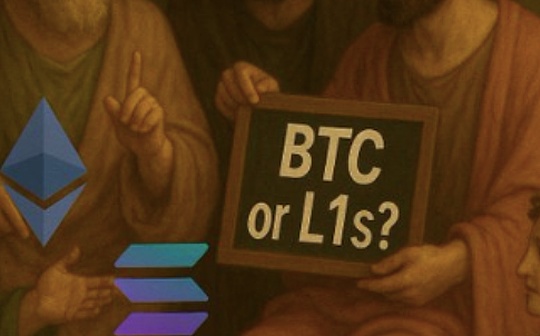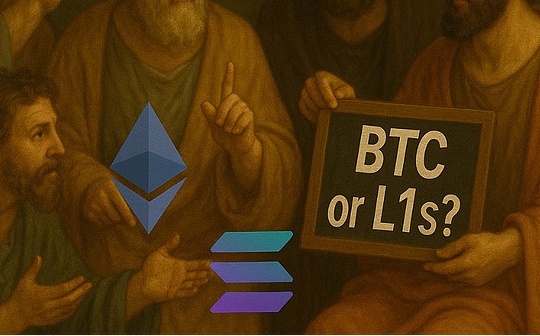
Author: FranceSco Source: Substack,@FraxCesco Translation: Shan Ouba, Bitchain Vision
Over the years, discussions on the reputation on the chain have continued.Since 2017, various projects have tried to solve this problem, and given users on the chain to use the reputation layer to understand the ability of transaction objects.Today, with various frauds, SocialFi, and celebrities, worthless tokens are continuously issued, which is more important than ever.
This article introduces the concept and importance of credibility on the chain, and focuses on projects such as Debank and Ethos Network.
Chain reputation
The reputation on the chain answered a simple question:
How do we evaluate the credibility of the person interacted in the decentralized system?
In the centralized system, third parties usually ensure this reputation (for example, credit scores, red wanted orders for international criminal police, and bank accounts).
Is there a way to copy reputation guarantee in a distributed system?
These efforts surpass a single agreement and try to innovate in this field.For practical,This reputation system must surpass a single agreement and create a unique set of standards that can identify on the Web2 and Web3 platforms, To create a cross -chain universal framework.
Any attempt that does not become a new standard will make this process useless.
According to A16Z, “To make decentralized status a mainstream, we must first establish a system to map people related chain experience and relationships to the chain. “Then” we must build a mechanism to standardize, process and prioritize data that will be added to the chain.”Stream”, and “solve the inner challenge of decentralized identity, including the problem of lack of context and access to decentralized networks on the chain records“” “.
Currently, evenThe input of the blockchain browser record is also very basicEssenceWithout the additional context of transactions, it will be more difficult to map and distribute credibility scores.
For example, the receiving NFT as part of the exchange should have different weights from receiving NFT due to the contribution to the extraordinary community of the project.
In addition, in the field of encryption, there are many forms of reputation, such as agreement trust, loan credit scores and project founders.
Only by considering all these factors can this system apply to a variety of use cases, incorporating the reputation on the chain into “offline activities based on decentralized identity”.
Three steps:
-
Record data on the chain
-
Map and explanation data
-
Converted into “credibility score”
-
Holonym (KYC)
-
Civic (biometric)
-
Google and LinkedIn (web2)
-
Guild and Snapshot (Web3)
-
Users can “bet” on others, express trust
-
Bad actors can be punished
-
Social consensus providers can get rewards
-
Reputation is protected by economic security, and falsification of credibility becomes expensive
-
Credit is valuable
-
It is easier to observe social interaction
-
Evaluation: Development beyond the reputation of providing economic bets
-
Guarantee: Similar to betting, users can bet their ETH on others and get ETH income.The guaranteed person will get 10%of the income to motivate verifications and recommendations.
-
Punishment: If the verifications are not behavior, users who guarantee their ETH can be punished, and the ETH of up to 10%of the offenders from the ETHOS contract is removed from the ETH.Those who are rejected will be punished.
-
Certification: Reflecting the authority, credibility and influence from other sources
-
WORLDCOIN: This giant operated by venture capital promises to scan your iris and make some WLD tokens for airdrops.Whether its purpose is noble or utopia, it is yet to be discussed.However, through the biometric scanning of user iris, they brought human certification.Although this has opened up a new risk, it is also an exciting experiment.
-
ENS: Convert the encrypted address to a human readable name to promote “message transmission on the chain”.
-
The reputation of encryption may be manipulated/purchased
-
Must protect privacy
-
It must exceed the binding of a single wallet, which is generally applicable
-
Public resume: Anyone can evaluate the reputation of other participants by allocating a single reputation score for each user.In addition, each article, each contribution or community participation will be recorded, which can be used as a credibility proof.
-
Celebrity issuance tokens: As celebrity tokens become a new trend, these issued data can be used to determine the trust files of each celebrity.We have seen many celebrities conduct a series of fraud.Through fast risk assessment, this problem can be partially solved to show users the risks of these tokens.
-
Developer developer: The developer is at its peak.However, many people abuse this force for “pulling up” or even blatantly fraud.We have seen some characters, as continuous developers, are constantly scamming.It is very useful to identify whether the deployee of a token is a scammer before.
-
KOL for sale: One of the major features in the Crypto Twitter is that the Opinion Leader (KOL) sells these tokens while selling their positions.Imagine that if you can have a credible ranking to determine whether your favorite KOL is credible, or know who is a complete vendor and liar.
-
Loyalty plan: Developing a reputation system on the chain will allow DAPPS to have deeper user interaction information, create customized plans, and focus on high -quality interaction with high -value interactions on the agreement.
-
Collab.land: A robot based on NFT to verify the contribution of ownership and DAO.
-
Karma: Visible to provide DAO contribution.
-
Pnthn: Track the credibility of DAO members.
-
Sourc3: Credit management on the chain on the platform.
-
Pental: Help user navigation protocol.
-
ONT ID: Decentralized identifier and authenticated voucher identity framework.
-
Krebit: Users can prove their identity without revealing their identity and protect privacy.
-
Orange Protocol: As a multi -chain reputation system that can be verified vouchers.
-
Outdid: Zero -knowledge proof for private identity verification.
-
Metopia: The reputation system for governance.
-
Astraly: Credit and reputation -based tokens on the chain.
-
Sport: No code tool to help DAO contributors create Zizi DAO.
-
Sourcecred: Help the contributors and reward high -quality participation.
True standardized reputation
In their “builder’s request”, the Base team outlined their views on the success of the reputation on the chain.They compare the “chain” to the next “online” and believe that credibility plays an important role in each chain account.
In this context, the “credibility agreement” can create more trust on the chain.They speculate that this is possibleSimilar to FICO (the most well -known credit score name) or Google Page Rank score.
Wallets can use these standards as anti -fraud mechanisms to achieve warnings on risk addresses.We have seen Rabby lead a warning of new contracts or fraud tokens.
Other reputation measures include blockchain analysis companies based on chain behaviors, such as Chainalysis, and DEBANKs that create Debank Credit scores.
The credit score is “comprehensive measurement of user authenticity, activities and value.Higher rating means more activities and user authenticity, but in the current state, Debank Credit cannot be used as a reputation agent.
>
In addition, we can observe the degree of importance to formal identity verification, which is still a controversial topic in the encryption field.
An example of a successful reputation mechanism isGitcoin passport.
Gitcoin Passport claims to be “authentication polymerization applications”.
Just like ordinary passports, users can collect seals by verifying previous activities or execution tasks and verification through different web2 and web3 verifications:
These seals will increase the default Humanity Score, which is assigned to each user’s credibility agency for the credibility of the web3 project.The higher Humanity Score means that you can get more opportunities, and the minimum score can be considered human.
Here are examples of seal that can be collected:
>
One of the advantages of Passport is that it protects user privacy and uses zero -knowledge methods to create a verifiable voucher to prove that users have performed specific activities but do not collect any personal identity information.
Another interesting attempt is the “verifiable verification certificate” in ETHOS Network.
ETHOS is developing a “credibility platform” that integrates in a wider ecosystem, not limited to a single DAPP.
>
This platform can be integrated into the existing interface (Chrome plug -in, metamask extension) and Dapps.The blueprint of this new social consensus is similar to Proof of Stake, and users act as “social verifications”.
ETHOS introduces economic rewards and punishments to ensure:
At the same time, balance must be found to ensure that credibility cannot be simply purchased.
On ETHOS Network, users will be able to:
All these mechanisms will be converted into a single reputation score.
Although these mechanisms pay less attention to the credibility in the chain, other noticeable examples in this field include:
Long road
The development of a truly standardized and universal chain reputation system will be a long and difficult road, and it will encounter many challenges.
Centralized solution
The main challenge is to ensure that all these systems are truly decentralized, rather than being controlled by centralized party control like WorldCoin or even Gitcoin Passport.
How to achieve the credibility of the chain in a decentralized manner?Any system that does not meet this will lose its Trustless element.
This implementation will be the result of the common efforts of all participants, wallets, blockchain browsers, DAPPS and networks.
The vision of using actual use cases
What is the ultimate vision of reputation on the chain?The following are actual examples and situations that may be helpful on some chains.
Other other reputation tools
In addition to what I mentioned earlier, there are various tools to contribute to trust and responsibility.







